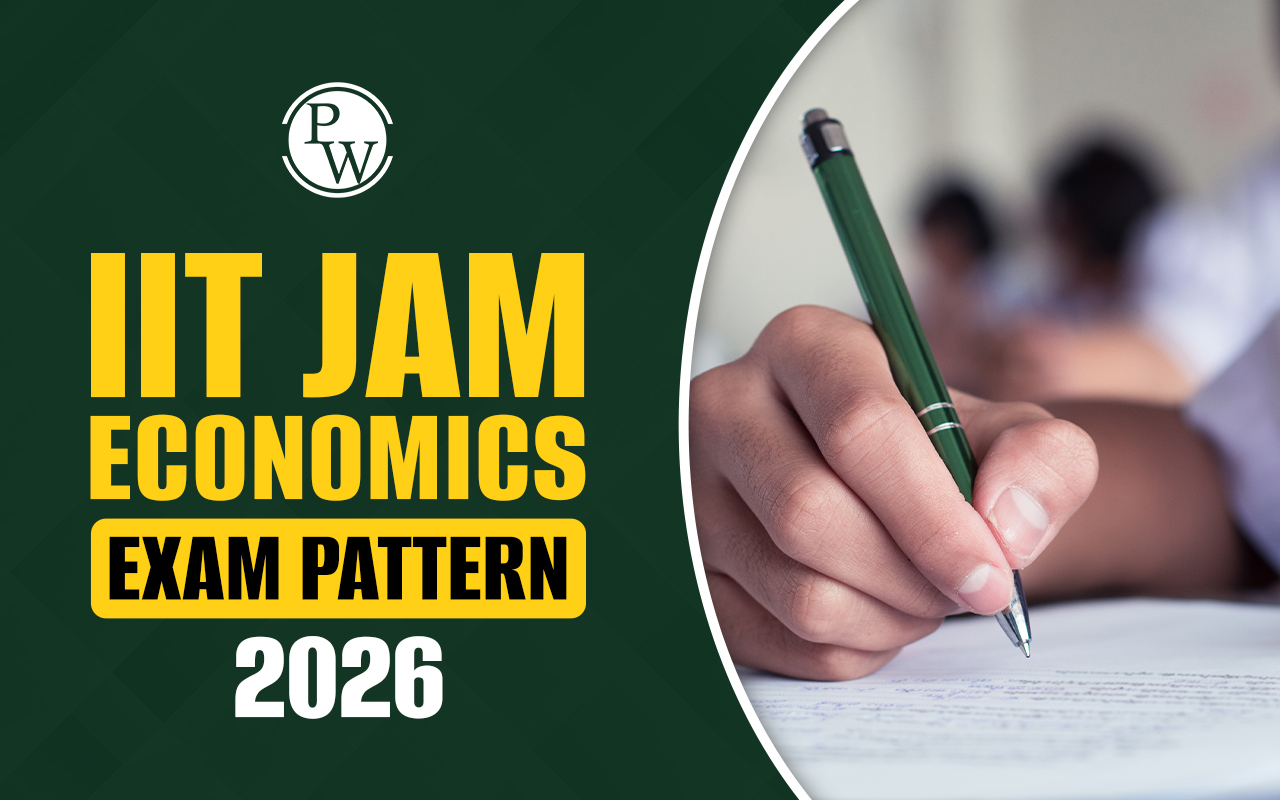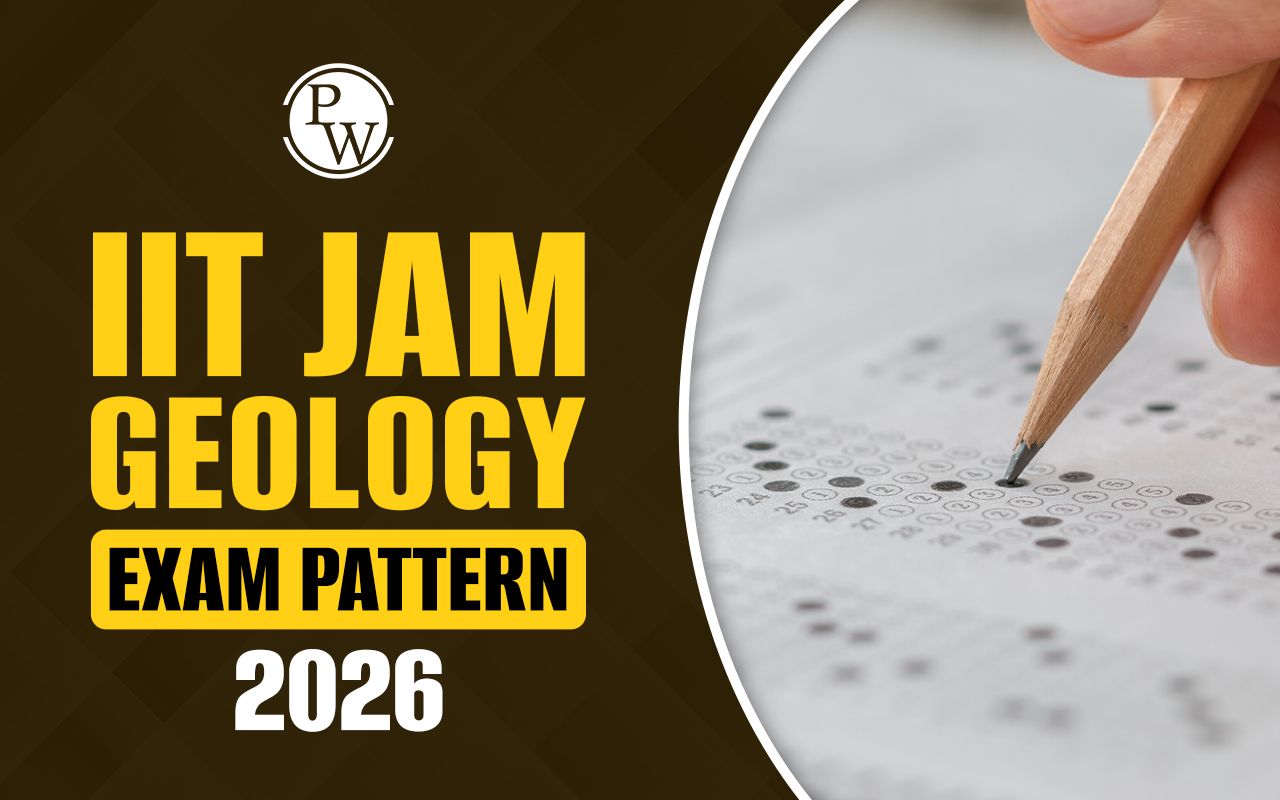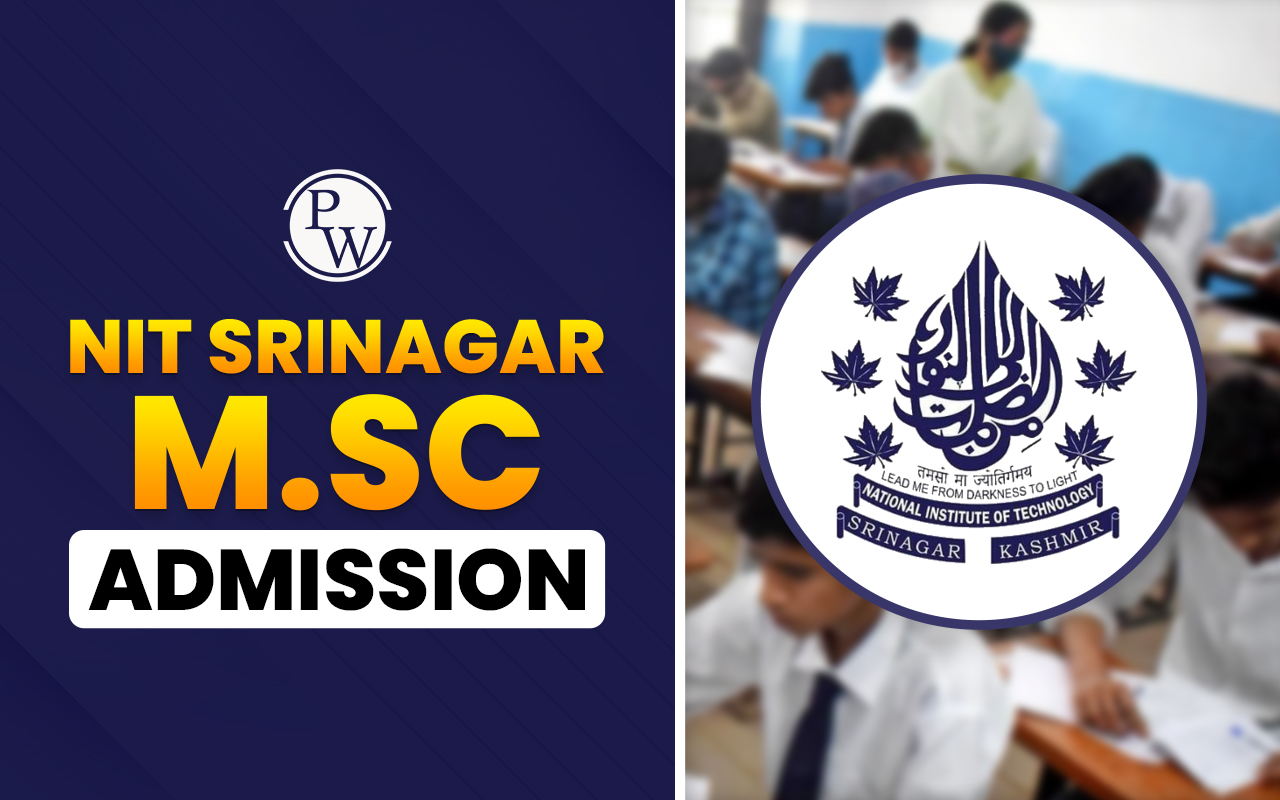

CUET PG Chemistry Syllabus 2025: CUET PG 2025 exam schedule will be announced by NTA on its official website. Aspirants should begin their preparation promptly to excel in the exam and secure admission to their preferred CUET PG participating universities. CUET PG 2025 Chemistry syllabus will also be released soon by the exam authorities on the official website. Candidates should focus on this syllabus to create an effective study plan. Feedback from previous test-takers indicates that exam questions are directly based on the CUET PG Chemistry syllabus provided by NTA.
CUET PG Chemistry syllabus includes topics from undergraduate Chemistry courses, such as Organic Chemistry, Inorganic Chemistry, and Physical Chemistry. This syllabus will aid candidates in reviewing the topics covered in their undergraduate studies and identifying any areas that need further attention. Candidates can refer to the previous year's CUET PG Chemistry syllabus in the article below for additional guidance.CUET PG Chemistry Syllabus 2025
CUET PG Chemistry Exam will facilitate admissions to various postgraduate chemistry programs offered by participating universities across the country. The syllabus for CUET PG Chemistry is expected to be similar to previous years. Prospective candidates should review the current syllabus to familiarize themselves with the topics covered in the Common Entrance Test. The National Testing Agency will soon release the updated syllabus for CUET PG Chemistry 2025, along with the official information brochure. Candidates are advised to thoroughly review this CUET PG Chemistry syllabus 2025 once it is available to ensure adequate preparation for the entrance examination. CUET PG Chemistry Syllabus 2025 PDF will be accessible on the official website when it is released.CUET PG Chemistry Syllabus 2025 Overview
The Common University Entrance Test (CUET PG) is a national-level entrance examination for students seeking admission to postgraduate programs at participating universities. Aspirants preparing for the CUET PG 2025 Chemistry test should start their preparation as early as possible to succeed in the exam and secure admission to their desired college or university. The CUET PG 2025 Chemistry Exam Overview are as follows:
| CUET PG Chemistry Syllabus 2025 Overview | |
| Particulars | Details (Tentative) |
| Examination Name | CUET PG Chemistry Exam 2025 |
| Full Name | Common University Entrance Test (PG) |
| Number of Parts in the Question Paper | 02 |
| Total No of Questions in Chemistry Exam | 100 questions (Part-A: 25 Q & Part-B 75 Q) |
| Total No of Questions to be Answered | 100 questions |
| Total Marks in Chemistry Exam | 400 |
| Question Type | Objective Type (MCQs) |
| Chemistry Exam Duration | 120 minutes |
| Mode of the Exam | Computer Based Test |
| Frequency of Exam | Once a year |
| Negative Marking | Yes |
| Marking Scheme | Marks per correct answer: +4 Marks per wrong answer: -1 Marks per unanswered question: 0 |
| Official Website | cuet.nta.nic.in |
CUET PG Chemistry Syllabus 2025 PDF Download
Candidates preparing for the CUET PG Chemistry Exam 2025 should be aware that the syllabus for 2025 will be released soon. In the meantime, they can refer to the previous year CUET PG Chemistry Syllabus to guide their preparation. It is essential to download and review the latest available syllabus to ensure effective study. The table below contains a link to the syllabus document for candidates' reference and preparation.
| CUET PG Chemistry Syllabus PDF Download (Previous Year) | |
| Subject | Download Link |
| CUET PG Chemistry Syllabus PDF | Click Here |
CUET PG Chemistry Section Wise Syllabus 2025
Candidates can refer to the detailed section-wise syllabus for CUET PG Chemistry 2025, which includes Organic Chemistry, Physical Chemistry, and Inorganic Chemistry:
CUET PG Syllabus 2025 Physical Chemistry
Candidates can check the table below covering the important topics of the physical chemistry section such as the behavior of gases and properties of liquids to thermodynamics, quantum chemistry, and electrochemistry. Each section outlines significant subtopics, providing a comprehensive overview of essential concepts in physical chemistry.
| CUET PG Syllabus 2025 Physical Chemistry (Expected Topics) | |
| Topics | Key Subtopics |
| Gaseous State | Real Gases Deviations, Compressibility Factor, van der Waals Equation, Kinetic Molecular Model, Maxwell Distribution |
| Liquid State | Vapor Pressure, Surface Tension, Viscosity, Structure of Liquids, Effect of Solute on Properties |
| Ionic Equilibria | Strong, Moderate, Weak Electrolytes, Ionization Constants, pH Scale, Common Ion Effect, Salt Hydrolysis, Buffer Solutions |
| Solid State | Symmetry Elements, Bravais Lattices, X-ray Diffraction, Crystal Defects |
| Thermodynamics | First Law, Enthalpy, Thermochemistry, Second Law, Entropy, Third Law, Free Energy Functions |
| Partial molar quantities | Gibbs-Duhem Equation, Chemical Potential of Ideal Mixtures |
| Dilute solutions or Colligative Properties | Vapor Pressure Lowering, Raoult’s, Henry’s Laws, Applications |
| Molecular Spectroscopy & Photochemistry | Rotation, Vibrational, Raman, Electronic Spectroscopy, Photophysical Processes, Jablonski Diagrams |
| Chemical Kinetics | Rate Laws, Order, Molecularity, Temperature Dependence, Collision Theory |
| Catalysis | Types of Catalysts, Mechanisms, Enzyme Catalysis |
| Surface chemistry | Adsorption, Adsorption Isotherms, BET Theory |
| Phase Equilibria | Gibbs Phase Rule, Phase Diagrams, Binary Solutions, Nernst Distribution Law |
| Introduction to Quantum Chemistry | Wave Particle Duality, Schrodinger Equation, Hydrogen Atom, Valence Bond, Molecular Orbital Approaches |
| Conductance | Arrhenius Theory, Conductivity, Ionic Velocities, Kohlrausch Law |
| Electrochemistry | Faraday’s Laws, Oxidation/Reduction Rules, Chemical Cells, Nernst Equation, EMF Measurements |
CUET PG Syllabus 2025 Organic Chemistry
The following table lists the essential CUET PG Chemistry Syllabus topics. These topics range from organic chemistry fundamentals to spectroscopic techniques, and include stereochemistry, hydrocarbons, functional groups, and advanced concepts such as polynuclear hydrocarbons and alkaloids. This detailed breakdown aims to help aspirants plan their preparation by ensuring a thorough understanding of each important part of organic chemistry.
| CUET PG Syllabus 2025 Organic Chemistry (Expected Topics) | |
| Topics | Key Subtopics |
| Basics of Organic Chemistry | Organic Compounds: Classification, Nomenclature - Hybridization, Shapes of Molecules, Influence on Bond Properties - Electronic Displacements: Inductive, Resonance, Hyperconjugation - Homolytic and Heterolytic Fission, Curly Arrow Rules - Electrophiles, Nucleophiles, Reaction Intermediates |
| Stereochemistry | Concept of Asymmetry, Fischer Projection - Newman and Sawhorse Projection - Geometrical Isomerism, E/Z Notations - Optical Isomerism, Chirality, Enantiomers - Diastereoisomers, Meso Structures, Relative and Absolute Configuration |
| Chemistry of Aliphatic Hydrocarbons | Alkanes: Formation, Wurtz Reaction, Substitutions - Alkenes and Alkynes: Elimination Reactions, E1, E2 Mechanism - Reactions of Alkenes: Electrophilic Additions - Reactions of Alkynes: Acidity, Additions |
| Cycloalkanes and Conformational Analysis | Cycloalkanes Stability, Baeyer Strain Theory - Conformational Analysis: Chair, Boat, Twist Boat Forms |
| Aromatic Hydrocarbons | Aromaticity, Huckel’s Rule - Electrophilic Aromatic Substitution: Halogenation, Nitration, Friedel-Craft’s Alkylation - Directing Effects of Substituent Groups |
| Chemistry of Halogenated Hydrocarbons | Alkyl Halides: Preparation, Substitution Reactions - Aryl Halides: Preparation, Nucleophilic Aromatic Substitution - Organometallic Compounds of Mg and Li |
| Alcohols, Phenols, Ethers, and Epoxides | Alcohols: Preparation, Properties - Phenols: Preparation, Acidity, Reactions - Ethers and Epoxides: Preparation, Reactions |
| Carbonyl Compounds | Nucleophilic Additions, Addition-Elimination Reactions - Aldol and Benzoin Condensation, Claisen-Schmidt Reaction - Oxidations and Reductions, Keto-Enol Tautomerism |
| Carboxylic Acids and their Derivatives | Monocarboxylic Acids: Preparation, Reactions - Dicarboxylic Acids, Hydroxy Acids, Unsaturated Acids - Acid Chlorides, Anhydrides, Esters, Amides |
| Sulphur-containing Compounds | Thiols, Thioethers, Sulphonic Acids: Preparation, Reactions |
| Nitrogen Containing Functional Groups | Nitro Compounds, Nitriles, Amines: Preparation, Reactions - Diazonium Salts: Preparation, Synthetic Applications |
| Polynuclear Hydrocarbons | Reactions of Naphthalene, Phenanthrene, Anthracene - Structure, Preparation, Derivatives of Naphthalene, Anthracene |
| Heterocyclic Compounds | Classification, Nomenclature - Furan, Pyrrole, Thiophene, Pyridine: Synthesis, Reactions - Quinoline, Isoquinoline: Synthesis, Reactions |
| Alkaloids | Natural Occurrence, Structural Features - Isolation, Physiological Action - Structure Elucidation and Synthesis of Selected Alkaloids |
| Terpenes | Occurrence, Classification - Isoprene Rule - Structure Elucidation and Synthesis of Selected Terpenes |
| Organic Spectroscopy | UV Spectroscopy, Woodward-Fiser Rule - IR Spectroscopy: Functional Group Identification - NMR: Chemical Shifts, Splitting, Spin Coupling - Mass Spectrometry: Fragmentation Rule, Structure Elucidation |
CUET PG Syllabus 2025 Inorganic Chemistry
Candidates can check the following table summarizes essential topics in the field of inorganic chemistry, covering aspects from atomic structure and periodicity to coordination chemistry and bioinorganic compounds. Each section provides an overview of important concepts.
| CUET PG Syllabus 2025 Inorganic Chemistry (Expected Topics) | |
| Topic | Key Subtopics |
| Atomic Structure | Bohr’s Theory, Limitations, Hydrogen Atom Spectrum - Wave Mechanics, de Broglie Equation - Heisenberg’s Uncertainty Principle - Schrödinger’s Wave Equation, ψ and ψ2 - Quantum Numbers, Normalized and Orthogonal Wave Functions - Pauli’s Exclusion Principle, Hund’s Rule, Aufbau’s Principle - Orbital Energy Variation with Atomic Number |
| Periodicity of Elements | s, p, d, f Block Elements, Long Form of Periodic Table - Effective Nuclear Charge, Shielding, Slater Rules - Atomic Radii, Ionic and Crystal Radii, Covalent Radii - Ionization Enthalpy, Successive Ionization Enthalpies - Electron Gain Enthalpy, Electronegativity - Metallic Bonding, Weak Chemical Forces (van der Waals, Hydrogen Bond) |
| Chemical Bonding | Ionic Bond: Characteristics, Radius Ratio Rule, Lattice Energy - Covalent Bond: Lewis Structure, VSEPR, Valence Bond Theory - Hybridization, Resonance, Molecular Orbital Theory - Metallic Bond, Weak Forces (van der Waals, Hydrogen Bond) |
| Metallic Bond and Weak Chemical Forces | Metallic Bond: Free Electron Model, Semiconductors, Insulators - Weak Forces: van der Waals, Ion-Dipole, Dipole-Dipole, Hydrogen Bond - Oxidation-Reduction, Metallurgy, Electrode Potential - Inorganic Polymers, Coordination Chemistry, Transition Elements |
| Oxidation-Reduction and General Principles of Metallurgy | Redox Equations, Electrode Potential, Ellingham Diagrams - Methods of Purification: Electrolytic, Kroll, Parting, van Arkel- de Boer, Mond’s Process - Chemistry of s and p Block Elements: Allotropy, Catenation, Complex Formation - Noble Gases, Clathrates, Noble Gas Compounds, Inertness Rationalization |
| Chemistry of s and p Block Elements | Inert Pair Effect, Oxidation States, Diagonal Relationship - Allotropy, Catenation, Complex Formation - Hydrides Classification - Boron Compounds: Boric Acid, Borates, Boron Nitrides, Borohydrides - Oxides and Oxoacids of Nitrogen, Phosphorus, Chlorine |
| Noble Gases | Occurrence, Uses, Inertness Rationalization - Clathrates, XeF2, XeF4, XeF6, Bonding in Noble Gas Compounds - Inorganic Polymers: Silicones, Siloxanes, Borazines, Silicates, Phosphazenes, Polysulphates |
| Coordination Chemistry | Werner’s Theory, EAN Rule, Crystal Field Theory - Valence Bond Theory, MO Diagrams - Ligand Field Theory, Isomerism, Stereochemistry - Transition Elements: Group Trends, Properties - Lanthanoids, Actinides: Electronic Configuration, Properties, Separation Methods |
| Bioinorganic Chemistry | Metal Ions in Biological Systems, Classification - Geochemical Effects, Trace Metals, Toxicity - Iron Applications in Biosystems, Haemoglobin - Organometallic Compounds: Definition, Classification, Metal Carbonyls |
CUET PG Chemistry Exam 2025 Preparation Tips
Here are some preparation tips for candidates who want to excel in the CUET PG 2025 Chemistry Exam:
Analyze the CUET PG Chemistry Syllab us 2025 : Candidates planning to take the CUET PG 2025 Chemistry paper should familiarize themselves with the syllabus. Understanding each topic covered in the CUET PG Chemistry Syllabus 2025 is important. Candidates can identify their strong and weak areas by carefully reviewing and mastering the syllabus. Understand the Examination Pattern: All CUET PG 2025 candidates must comprehensively understand the examination pattern. This knowledge is crucial for comprehending the complexity of the entrance test. Make a Preparation Plan: All CUET PG 2025 applicants aspiring to study at their desired Central University should formulate a study plan before commencing preparation. Simply creating a plan is not enough; candidates must diligently adhere to it. Practice Regularly: Practice is essential to securing a favourable CUET PG 2025 Chemistry examination score. Aspirants are encouraged to solve numerous sample papers, engage in mock tests, and tackle previous years' question papers. Prioritize Revision: Revision is an essential aspect of preparation. Candidates should set aside at least a month to thoroughly review the subject, ensuring all topics are completed well before the examination.Physics Wallah, a leading online coaching platform for CUET PG in India, provides cost-effective, inclusive, and easily accessible student services. Students can access advanced features and enriched learning experiences by enrolling in our CUET PG Online Coaching program.
CUET PG Chemistry Syllabus <span style=
What is the Chemistry syllabus for CUET ?
What are the passing marks for CUET Chemistry?
What is the structure of the CUET PG exam?
Is CUET PG challenging?












